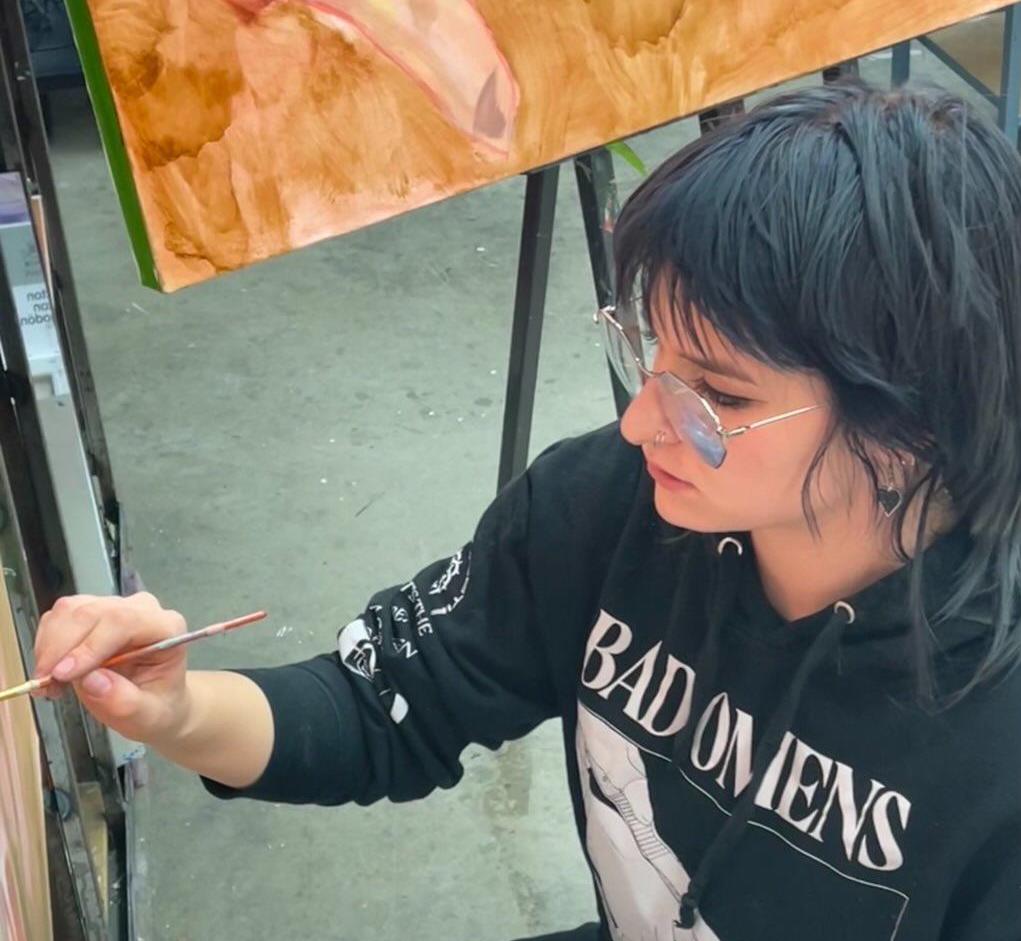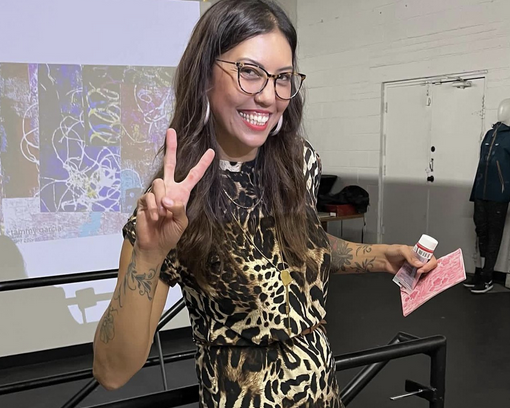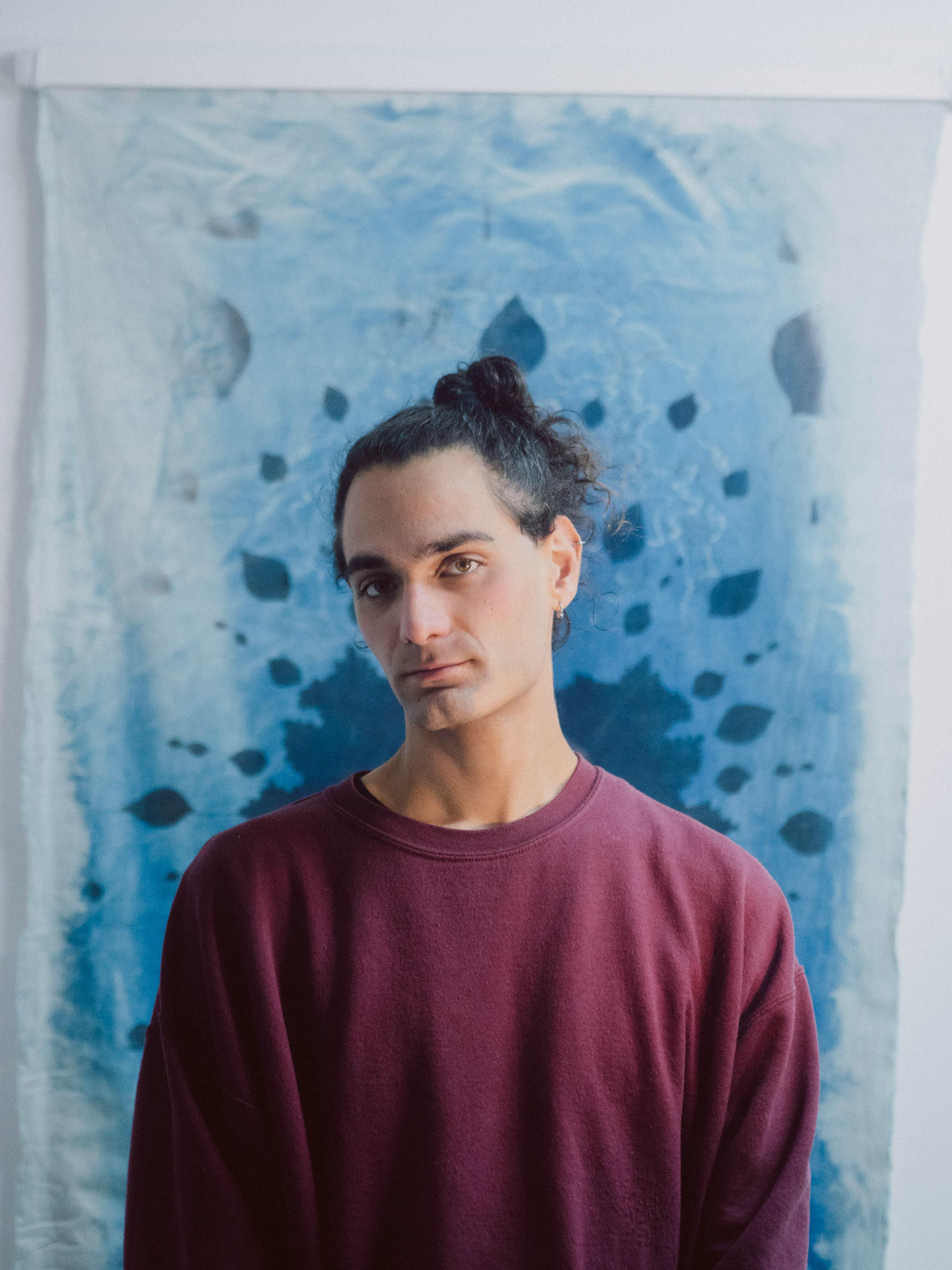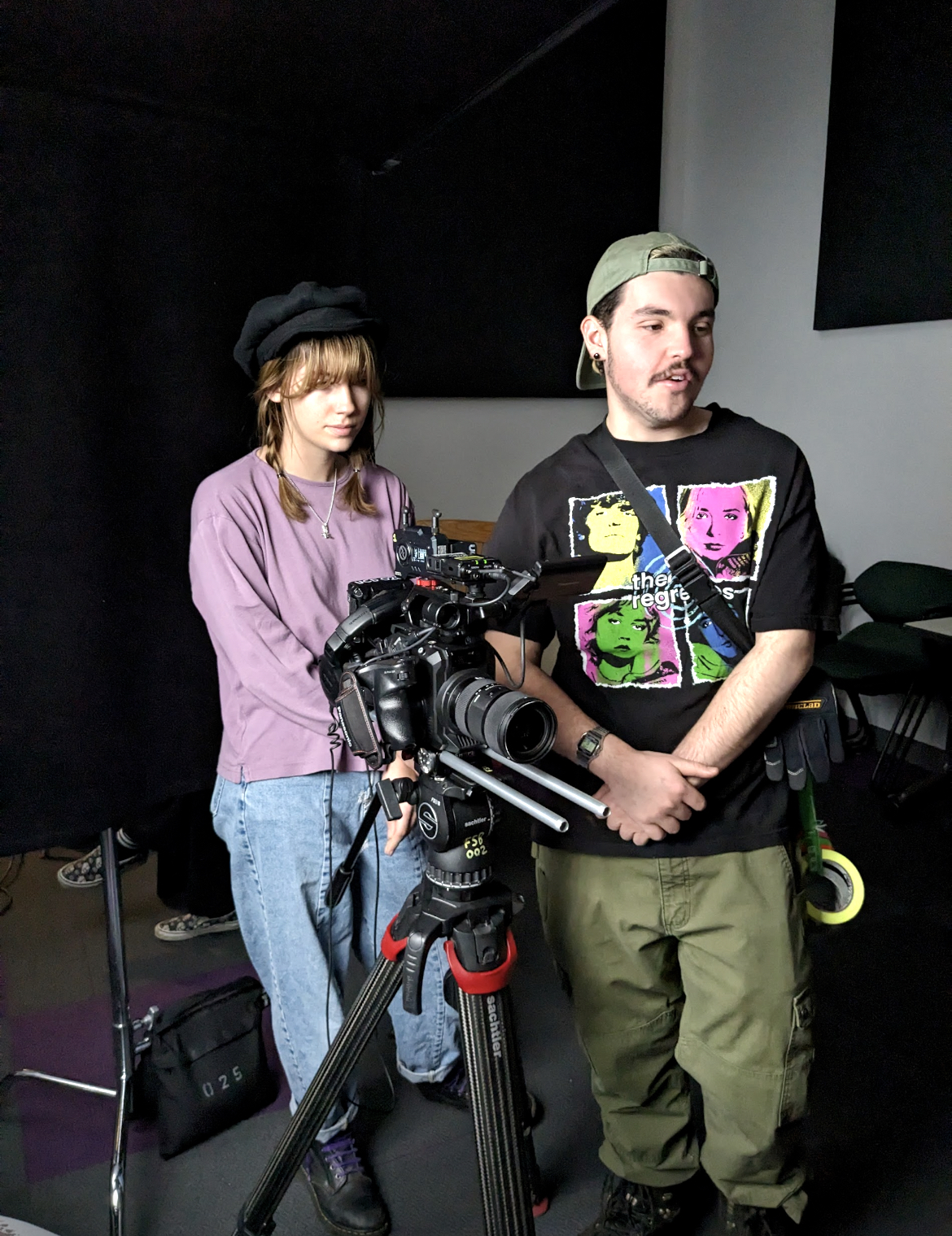The Incredibly Prolific Life of Jazz Musician Eddie Henderson
Dr. Eddie Henderson is the subject of a new documentary created by CAM Professor Michelle Carpenter and an exhibition in the CU Denver Experience Gallery.
Megan Briggs Pintel | College of Arts & Media Jan 12, 2024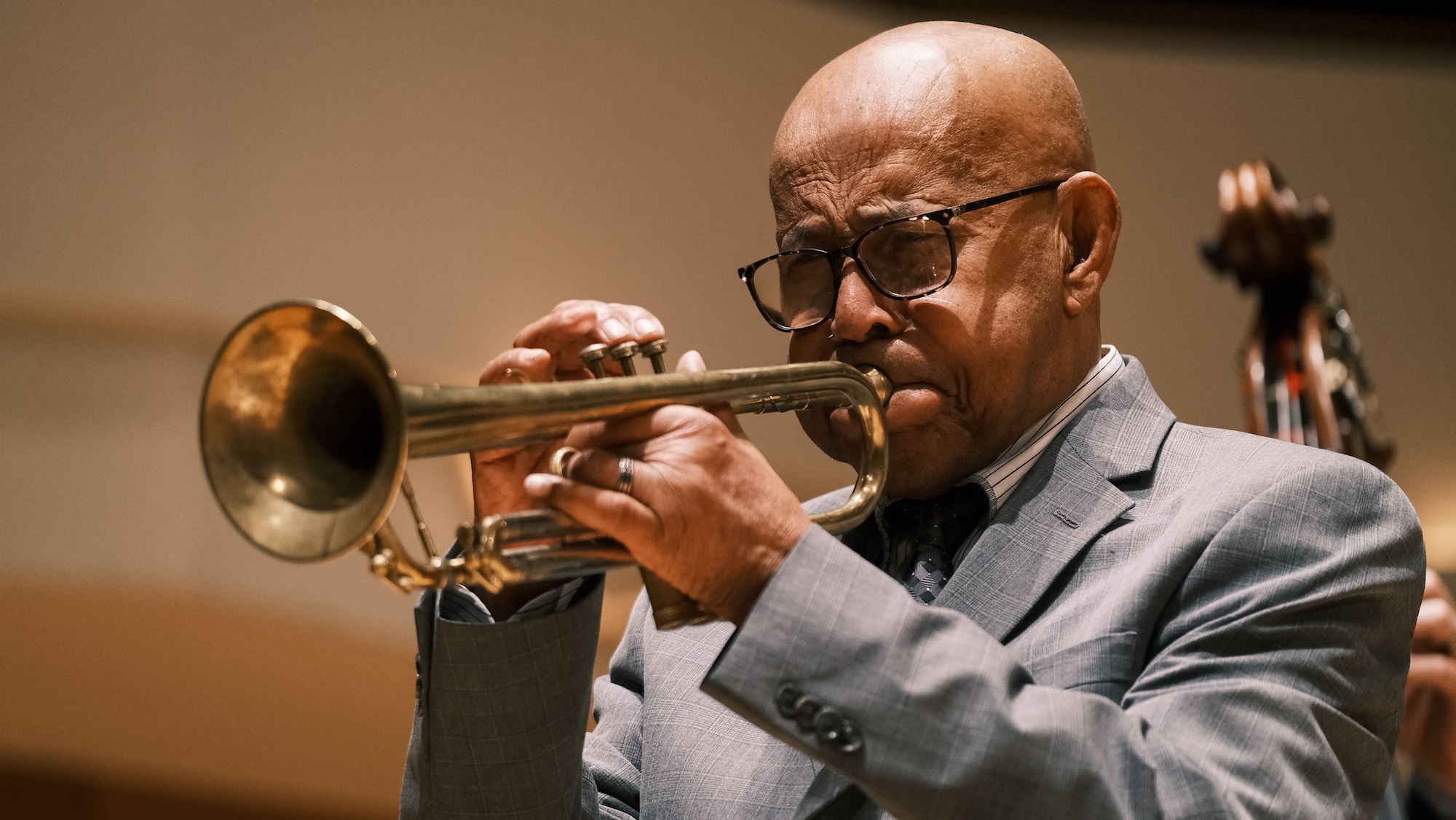
Eddie Henderson, M.D. is an accomplished person, to put it simply. The musician has taken lessons from or played onstage with some of the most notable jazz greats: Louis Armstrong, Miles Davis, Max Roach, Art Blakey, and Herbie Hancock, to name a handful. But jazz musician isn’t the only title on Henderson’s resume. During his 83 years on this planet, he’s also served in the U.S. Air Force, practiced medicine, and was the first African American to compete for a national figure skating championship.
Henderson is the subject of a new documentary created by College of Arts & Media Professor Michelle Carpenter titled Dr. Eddie Henderson: Uncommon Genius. Additionally, Time and Spaces: The Life of Eddie Henderson, an exhibition about Henderson’s extraordinary life, will open at the CU Denver Experience Gallery on February 1, 2024. Henderson will perform at Dazzle Jazz Club following the opening. The film will premiere on PBS 12 (Colorado Public Television) Friday, February 9, 2024 at 9:30 p.m., with subsequent airings on the 11th and 22nd. A film screening will also be held on campus, in the Emmanuel Art Gallery, on February 15, 2024 at 11 a.m.
The Incredible Trajectory of Eddie Henderson’s Life and Career
Despite his life going in multiple distinct directions, Henderson describes his first passion as music. His parents were both musically inclined; his mother was a dancer at the original Cotton Club in New York City and his father was a member of Billy Williams and the Charioteers, the most popular Black singing group of the 1940s. Henderson received an informal trumpet lesson from none other than Louis Armstrong at the age of nine, his mother having made the introduction thanks to her connections at the Cotton Club.
Henderson’s father passed away when he was nine, and five years later his mother remarried a doctor who lived in San Francisco. In San Francisco, Henderson discovered ice skating and studied classical trumpet at the San Francisco Conservatory. Since his stepfather served as physician to some famous musicians, Henderson was introduced to Miles Davis as a teenager, who stayed in his parents’ house while performing in the city. Davis took Henderson to his gigs, and “That’s when the musical light came on,” for him, Henderson recalls.
After his first year of college at the University of San Francisco, Henderson had a bit of a falling out with his stepfather and decided to “be a man and join the Air Force.” This decision brought Henderson to Colorado where he was stationed at Lowry Air Force Base in Denver. Henderson returned to San Francisco to begin pre-med studies at University of California Berkley and eventually moved to Washington D.C. to attend medical school at Howard University. At this time Henderson kept a rigid schedule of going to class, studying, and playing jazz in the evenings. “I never missed a class in high school or medical school,” Henderson says. “I would go to class from 8am to 5pm every day, then go home and study, from 5:15 to 9:15pm, and then from 9:15 until 2am learn how to play jazz,” he recalls. Despite his peers telling him this routine wouldn’t serve him, Henderson passed medical school while others failed.
After medical school, Henderson moved back to San Francisco to practice psychiatry. It was here that Henderson had the opportunity to play with some heavy hitters in the jazz world. Henderson played with Herbie Hancock’s Mwandishi band from 1970 - 1973 and recorded two albums with the help of the group, 1972’s Realization and 1973’s Inside Out. Henderson credits the stint with Hancock as the gig that “opened the door” for him to play with even more famous artists. Much like he did during medical school, he would practice medicine during the day and played at San Francisco’s iconic Keystone Korner jazz club in the evenings. Musicians on tour would hire Henderson to play with them for their sets at the Keystone Korner.
Eddie Henderson to Visit Denver in February
Henderson will be visiting Denver on February 1, 2024. Prior to a set of evening shows at Dazzle Jazz, he will be making an appearance at the opening of Time and Spaces: The Life of Eddie Henderson. The retrospective exhibition is on display at the CU Denver Experience Gallery, located in the Denver Performing Arts Complex, and right next to the storied jazz club. The opening reception is from 4–7 pm and the exhibition runs through April 21st.
The College of Arts & Media was honored to host Henderson in concert this past November. The 36 students who worked on the CU Denver Experience Gallery exhibition have also been given the chance to discover a living legend and share his experience through their own art and design. Before Dr. Henderson returns to Denver in February, CAM interviewed Dr. Henderson so that others can experience the pleasure of learning about this prolific figure and gain a taste of what will be gleaned from the film and exhibition.
While Henderson attributes breaks like the one had with Hancock to the reason he says, “I’ve been lucky all my life,” he nevertheless experienced the racism one would expect to encounter as a Black person in America. In our interview with Henderson, he recalls some of these racist experiences as he diligently pursued what turned into a successfully prolific musical career.

Eddie Henderson Answers Our Questions
What drew you to ice skating?
I moved to San Francisco during the summer when I was 14, and I had no friends, so my stepfather—he was a very wealthy doctor—afforded me to go see the Ice Follies. From the first day I saw that, I was mesmerized. The star of the Ice Follies, Richard Dwyer (who I still keep in contact with) gave me my first two lessons during that summer.
But when I wanted to join the San Francisco figure skating club, the head of the club told me he wouldn’t give me an application. I didn’t understand. On the way back home on the bus, it dawned on me, and I started crying. So that just made me mad. I thought “Oh, so they’re going to do me like that? I’m going to be better than they are.” I practiced diligently—all those double axels and triple salchow you see on TV now; I was doing that back in high school.
When I moved to Denver, the Denver figure skating club welcomed me with open arms and wanted me to represent them in the midwestern championship. I won a bronze medal at the championship, and so I was on the podium. I was the first Black person in history to ever win a medal in a figure skating championship. I really thought that was my calling in life, and so after I got out of the Air Force, I moved back to San Francisco to go to University of California pre-med and I was still figure skating diligently. At this time, the San Francisco figure skating club changed their mood. Peggy Fleming, the Olympic champion figure skater, was going to be a part of their show. And since I was the best male skater in San Francisco, they voted me in the club so I could skate opposite Peggy Fleming. How nice of them, right! [chuckles] They told me after I did the show, I had to pay them $300. Well, I did the show, and they said “Ok, boy, give us the money.” So, I told them, “You can kiss my you know what.”
What was your time in the Air Force like?
I was stationed at Lowry Air Force Base training electronics, specifically how to fix the navigation system to drop the atom bomb when it was defective. It was wonderful because I would go to school from midnight until six in the morning and the other 18 hours I had free, so all I did was figure skating.
I trained at Denver University ice skating rink and occasionally I’d go to Colorado Springs to take lessons from the Olympic coach there. But then, I ran into so much racism in the Air Force—this is way back in the 60s—that I realized I wanted to go back to school and get an education and get away from all these ignorant people telling me what to do—I thought to hell with that!
Do you think things might have turned out differently for you if you had stayed in Denver and stayed with that club that embraced you?
Uhm...no. I still loved figure skating and continued skating after that, until I got to medical school. And then there just wasn’t enough time.
After I finished medical school and went back to San Francisco to do my internship, I went to the Ice Follies to see my old teacher Richard Dwyer skate, but this time they had one token Black skater, and I was so happy for that, but when he came out on the ice, they had him dressed up in a red, white and blue Uncle Sam costume skating to “Old Man River.” I thought to myself, “I want to be a part of that plastic stuff?” That shows the mentality of how it was in the 60s in America. It’s changed quite a bit since then—there are Black figure skaters now in ice shows. But when I was coming up, I was like the Jackie Robinson of figure skating.
Did you think at the time you might be able to change the sport?
Well, I guess I opened the door a little bit. There has to be a first somewhere, and I just happened to be the one. But it was painful, emotionally, for a young kid, for four years in San Francisco when I would be on the ice every day and all the instructors knew my name, but they still called me “boy.” I had to just swallow all that, which made me mad and made me skate harder and try to perfect my skating.
What was it like to perform at the Keystone Korner?
When I was in San Francisco, for 10 or 11 years while I was practicing medicine, I would be at the Keystone Korner every night and all the major groups, all my heroes, who came through to play would hire me to play with them. All the iconic groups, Art Blakey, Dexter Gordon, McCoy Tyner, Max Roach, they’d all hire me because I had played with Herbie Hancock. I didn’t have to move to New York to play with these greats. That allowed me to play while I was still practicing medicine. I had a very lucrative career in San Francisco.
What led to your move away from medicine and into music full time?
In 1985, my mother called me and said she couldn’t make it financially anymore by herself in New York because she was sick. I dropped everything, quit my practice, and moved back to New York to help my mother. I worked at the transit authority for about six months, but my musical career was really taking off, so I quit that job.
You only have one mother, and I never gave it a second thought. My mother passed away in 1994, and I loved her.

What would you say to a young person who wants to pursue music?
People who love music, it’s in their genes. Anybody who wants to do music should do it. But that old adage that you can only do one thing in life is false. I have friends who have done five major things with their lives. When one has discipline at an early age, you can do any number of things. But it’s hard to get discipline later in life because there are so many other life distractions. For me, I started music early and that taught me mathematics. Reading music is a discipline. Studying music at an early age will give you the discipline to do other things in life just in case it’s not financially rewarding to make a living in music. But I tell my students to think about having a backup. Think about having a secondary major also.
How has music helped you mentally and emotionally?
A lot of my classmates in medical school, for example, were so uptight and stressed all the time, but I took the mindset that if I didn’t pass medical school, I’d still have music. I felt music was something I had to do; I wasn’t going to give up music just to pass the test in medical school. Music was my escape valve to release the pressure and be relaxed. It gave me a freedom to get out of the pressure cooker. It was somewhere where I could express my emotional self in a creative way.
What do you enjoy about teaching trumpet at Oberlin Conservatory?
I think it’s so important to pass on the things I’ve learned in my career to the upcoming generation of talented musicians who, just like me, want to pursue a career in music. It’s like a relay race. I’m just passing the baton of the knowledge that I got from my predecessors to them so that the tradition can go on into the future. Another joy I get from my students is it keeps me on my toes. A lot of them are very talented—it makes me start practicing! [chuckles] I’ve learned a lot from them, too. It’s a reciprocal process and that’s the beauty of it.
Lastly, how do you feel about Colorado?
I love Colorado. I remember when I moved to Denver, the air there back in 1959 was so pristine and clean. I’d come from San Francisco, which was clean, but had a different smell in the air. I had such a lovely time in Colorado because all I did was go to school at Lowry for six hours a day. The rest of the time, I was just figure skating and hanging with my friends from the base. The people in Colorado were so warm—the figure skating club, particularly—it really touched my heart.

